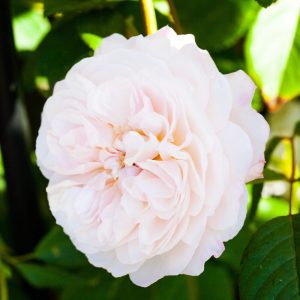Description
Salvia x sylvestris ‘Rose Queen’ is a beautiful perennial plant that produces masses of elegant pink flowers on tall spikes from early to late summer. This easy-to-grow plant forms a bushy clump of grey-green foliage that makes an attractive background for the eye-catching flowers. ‘Rose Queen’ is a great addition to any cottage or wildlife garden, where it can be planted in borders or as an accent plant. It attracts bees and butterflies, making it a wonderful choice for pollinator-friendly gardens. ‘Rose Queen’ prefers full sun to partial shade and well-drained soil. It is drought-tolerant once established and can benefit from regular deadheading to prolong flowering.
Key Facts
- Common Name(s):Salvia ‘Rose Queen’
- Hardiness:Fully hardy
- How big will I get? Salvia x sylvestris ‘Rose Queen’ can grow to a height of 0.5m and a spread of 0.5m.
- Did You Know That:The name salvia comes from the Latin world “salvus” meaning well or unharmed?
Plant Calendar
A rough guide to how this plant will change through the year.
| Jan | Feb | Mar | Apr | May | June | July | Aug | Sept | Oct | Nov | Dec | |
| Flowering Time |  |
 |
 |
 |
||||||||
| Foliage Colour |  |
 |
 |
 |
 |
 |
 |
 |
 |
| J | F | M | A | M | J | J | A | S | O | N | D |
 |
 |
 |
 |
||||||||
 |
 |
 |
 |
 |
 |
 |
 |
 |
Care Guide

Soil Requirements
Salvia x sylvestris ‘Rose Queen’ is a versatile plant and can cope with wet or drier soils, but prefers there to be decent drainage. This plant can grow in soil with a wide range of pH levels, it is not picky about the pH level of the soil.

Best Position
Salvia x sylvestris ‘Rose Queen’ can handle either an exposed or a sheltered position and can cope with either full sun or partial shade.

Maintenance
Salvia x sylvestris ‘Rose Queen’ should be deadheaded regularly to promote new flowers coming through. This will prolong the flowering period of the plant as it saves the energy that the plant would have put into producing seeds and allows it to produce more flowers!

Pest, Diseases and Wildlife
Salvia x sylvestris ‘Rose Queen’ is generally pest free, and it tends not to have problems with diseases. It is also known to attract bees, butterflies, birds and other pollinators. It is not considered to be toxic.







